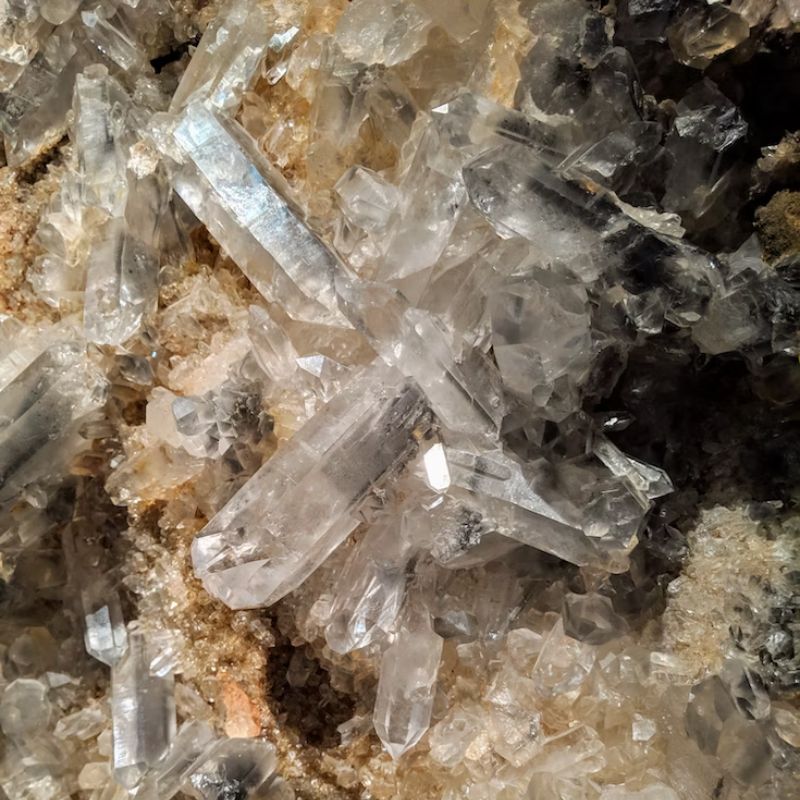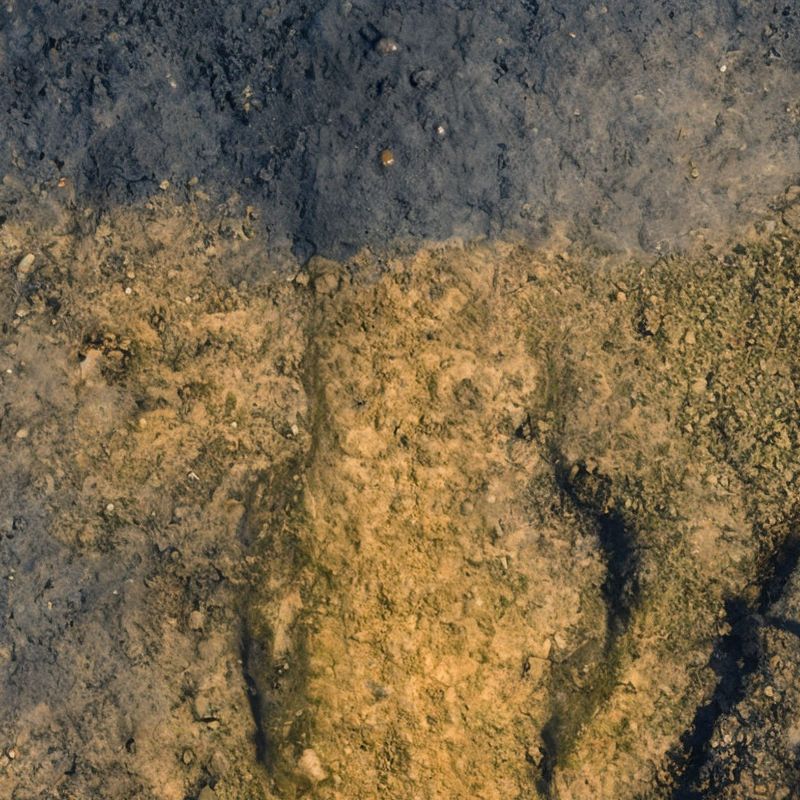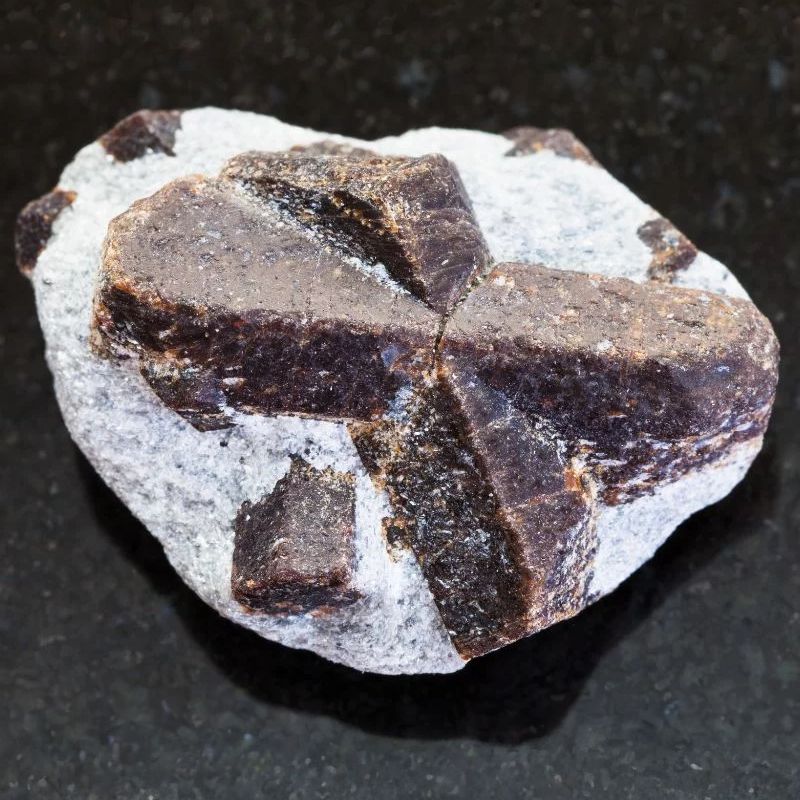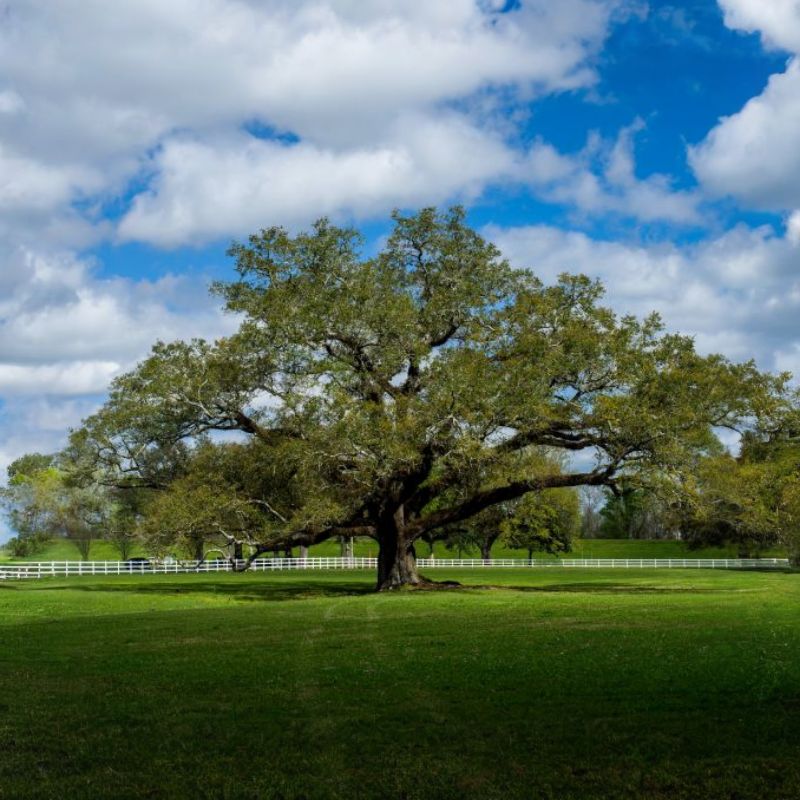Explore the Fascinating History of Georgia
Take our Georgia Trivia Quizzes for a Chance to Win a 6-Month Subscription to History By Mail!

The History of Georgia
Journey Through Georgia Trivia
Welcome to our Georgia History and Trivia Page, proudly presented by History By Mail. Join us as we embark on a journey through the captivating past and cultural tapestry of the Peach State. From Native American tribes to European settlers and the modern era, we'll explore Georgia's hidden gems and challenge your knowledge with entertaining quizzes, including Georgia trivia facts.
Georgia, famously known as the Peach State, is a land of remarkable history and diverse heritage. From the indigenous peoples who first inhabited the land to the European explorers who arrived centuries later, Georgia holds a captivating legacy. From the vibrant city of Atlanta to the charming streets of Savannah, Georgia showcases a blend of cultures, historic landmarks, and a deep connection to its natural landscapes.
Join us as we unravel the intriguing history and trivia of Georgia, delving into its role in shaping American history, its contributions to music and the arts, and the fascinating stories that make it a unique and cherished part of our nation's heritage. Test your knowledge with engaging Georgia trivia, including Ginny and Georgia trivia, and discover the Peach State's captivating past.
Facts about Georgia
State Abbreviation: GA
Capital: Atlanta
Name Origin: Georgia was named after King George II, who approved the colony’s charter in 1732.
Nickname: Peach State, Empire State of the South
Statehood: January 2, 1788 (4th State)
State Motto: Wisdom, justice, and moderation

Georgia's Flag
The arch holds three symbols: a shield with 13 stripes for colonies and commitment to the U.S.; "Wisdom, Justice, and Moderation" motto for governance; a cotton plant representing agriculture. Around, 13 stars circle, marking Georgia's colonial roots and unity. Below, "In God We Trust" reflects faith.
Georgia's Great Seal
The 1799 Georgia State Seal, circular in design, captures the state's essence. Three pillars uphold an arch, embodying wisdom, justice, and moderation, core to governance. The central image features a coat of arms with shield and columns denoting government branches. Above, an "Constitution" arch with "Wisdom, Justice, and Moderation" underscores guiding principles. Encircling, "State of Georgia" and "1776" signify statehood and founding. Imagery depicts agriculture and mining, highlighting resources.
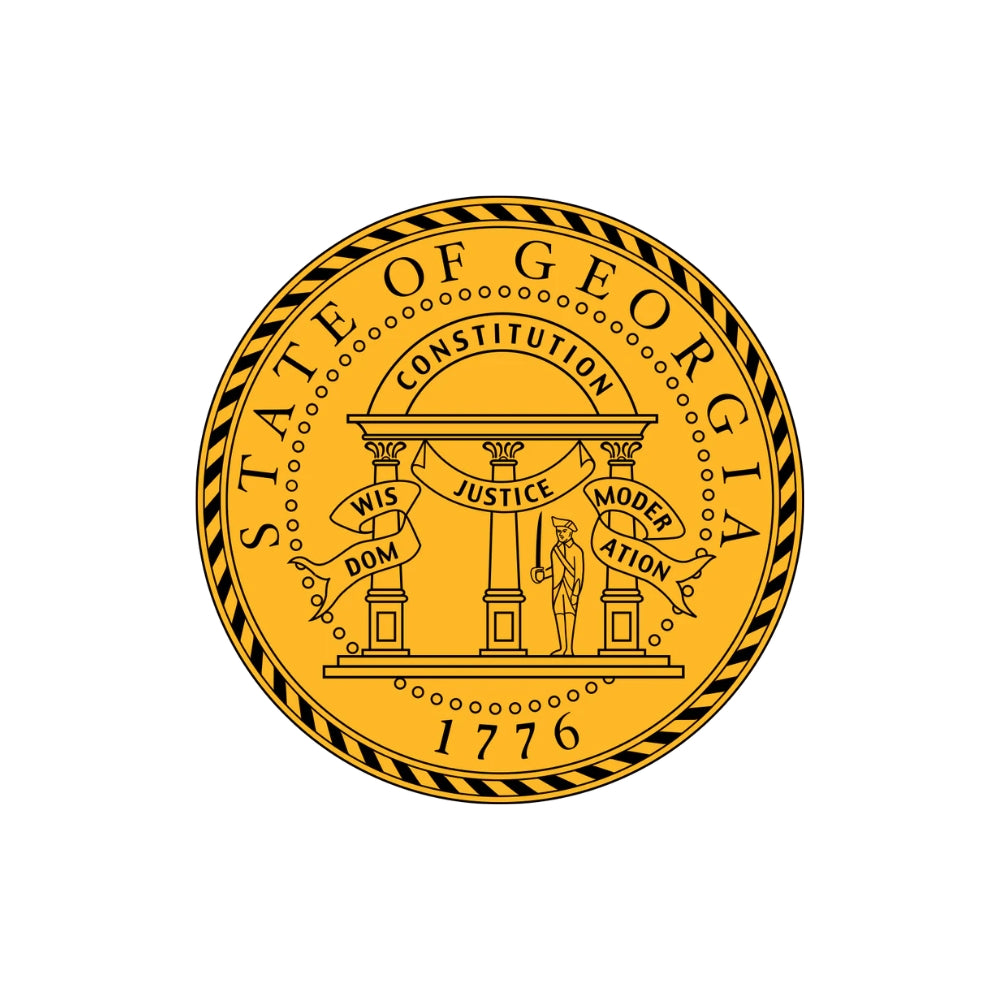
--- State Trivia #1 ---
History of Georgia
Georgia's rich history begins with the exploration of its lands by Spanish explorer Hernando de Soto in 1540. Conflicting claims between Britain and Spain emerged, but eventually, Gen. James Oglethorpe secured a royal charter and established Georgia's first permanent settlement in 1733. The settlement served as a refuge for English debtors. Oglethorpe further defended Georgia in the Battle of Bloody Marsh, successfully repelling Spanish invaders in 1742.
During the Civil War, Georgia played a significant role as a Confederate stronghold, witnessing extensive military action. Union general William T. Sherman's infamous "March to the Sea" led to the burning of Atlanta and the destruction of a wide path to the coast. In 1864, Sherman captured Savannah.
As the largest state in the southeast, Georgia exemplifies the changing face of the South, experiencing ongoing industrial development. Atlanta, the state's largest city, stands as the communication and transportation hub of the Southeast and serves as the primary distribution center for the region's goods.
Georgia holds national prominence in various industries. It leads the nation in the production of paper and board, tufted textile products, and processed chicken. The state's manufacturing sector also encompasses transportation equipment, food products, apparel, and chemicals.
Agriculturally, Georgia thrives with crops such as corn, cotton, tobacco, soybeans, eggs, and peaches. The state surpasses all others in peanut production, and its vast pine forests contribute over half of the world's resins and turpentine, along with 74.4 percent of the U.S. supply. Georgia also excels in the extraction of marble, kaolin, barite, and bauxite.
Georgia's diverse attractions draw tourists from far and wide. The Okefenokee National Wildlife Refuge, Andersonville Prison Park and National Cemetery, Chickamauga and Chattanooga National Military Park, Warm Springs' Little White House (where President Franklin D. Roosevelt passed away in 1945), Sea Island, the monumental Confederate Memorial at Stone Mountain, Kennesaw Mountain National Battlefield Park, and Cumberland Island National Seashore are among the state's principal points of interest. Notably, the world's largest indoor aquarium, the Georgia Aquarium, opened in 2005, showcasing over 100,000 aquatic animals, including the only whale sharks in captivity outside of Asia.
State Symbols
Fun Facts
- Visit Radium Springs, natural hot springs that flow from the ground at 70,000 gallons a minute.
- President Jimmy Carter and Martin Luther King, Jr. lived here.
- Take a horse-drawn carriage ride in the city of Savannah to see cobbled streets, beautiful parks, and 18th-century architecture.
--- State Trivia #2 ---

Things To Do in Georgia
- Explore the Historic District of Savannah: Take a stroll through the picturesque streets of Savannah, Georgia's oldest city. Admire the well-preserved antebellum architecture, visit historic landmarks like Forsyth Park and the Cathedral of St. John the Baptist, and learn about the city's rich history and Southern charm.
- Hike in the Appalachian Mountains: Georgia is home to a section of the iconic Appalachian Mountains, offering breathtaking natural beauty and outdoor adventures. Explore trails in places like the Chattahoochee National Forest or visit Amicalola Falls State Park, where you can hike to the highest waterfall in Georgia and enjoy stunning views.
- Visit the Georgia Aquarium in Atlanta: Located in downtown Atlanta, the Georgia Aquarium is one of the largest aquariums in the world. Immerse yourself in a marine wonderland and encounter a variety of fascinating sea creatures, including beluga whales, whale sharks, penguins, and more. Don't miss the opportunity to dive or snorkel with the whale sharks for an unforgettable experience.
- Tour the Antebellum Plantations: Experience the grandeur and history of Georgia's antebellum era by visiting one of the beautifully preserved plantations. Places like the Oak Alley Plantation in Natchez or the Wormsloe Historic Site in Savannah offer guided tours that provide insights into the lives of plantation owners and their workers, as well as the cultural heritage of the region.
- Indulge in Southern Cuisine: Georgia is renowned for its delicious Southern cuisine, so be sure to sample some of the local dishes. Treat yourself to classics like fried chicken, shrimp and grits, collard greens, and peach cobbler. Visit Atlanta's Ponce City Market or Savannah's City Market for a wide selection of restaurants serving Southern delicacies, and experience the flavors that define Georgia's culinary traditions.
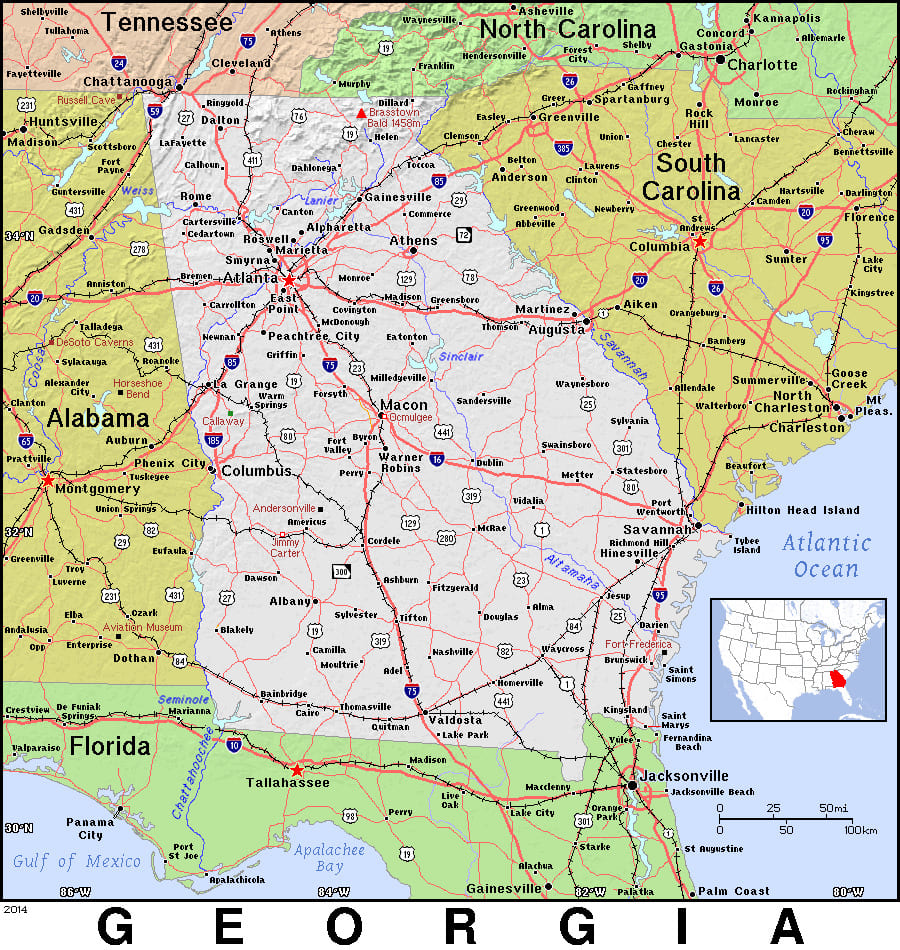
General Map of Georgia
Georgia, known as the "Peach State" and located in the southeastern region of the United States, offers a rich tapestry of attractions and activities that showcase its captivating history, scenic beauty, and vibrant cities. From historic landmarks to breathtaking mountains and charming coastal areas, Georgia provides a diverse range of experiences for visitors to enjoy.
Famous People From Georgia
--- State Trivia #3 ---
FREQUENTLY ASKED QUESTIONS (FAQ) ABOUT GEORGIA
Georgia earned its nickname due to its significant production of delicious peaches. Although not the leading peach producer anymore, the state's warm climate and fertile soil contribute to its continued association with this tasty fruit.
Georgia was named after King George II of England. The colony was established in his honor by James Oglethorpe in 1732. The name reflects the strong ties between the colony and the British Crown.
James Oglethorpe was a British philanthropist and military leader who founded the colony of Georgia in 1732. He aimed to establish a haven for debtors and provide a buffer between Spanish Florida and the Carolinas. Oglethorpe's leadership laid the groundwork for Georgia's development.
Georgia played a significant role in the Revolutionary War. It was the site of several battles, including the crucial Siege of Savannah in 1779. While the British initially captured Savannah, the eventual American victory helped weaken British control in the South.
Related Resources
- Official Website of the State of Georgia: The official website provides information about the state government, services, business resources, tourism, and more. Visit: https://georgia.gov/
- Georgia Department of Economic Development: Explore economic development opportunities, business resources, and tourism information for Georgia. Visit: https://www.georgia.org/
- Georgia State Parks & Historic Sites: Discover Georgia's beautiful state parks, historic sites, recreational activities, and camping options. Visit: https://gastateparks.org/
- Georgia Department of Natural Resources: Learn about Georgia's natural resources, wildlife management, conservation efforts, and outdoor recreational activities. Visit: https://gadnr.org/
- Georgia Historical Society: Explore Georgia's rich history through educational programs, research resources, publications, and events. Visit: https://georgiahistory.com/
- Georgia Civil Rights Trail: Explore significant landmarks and sites related to the Civil Rights Movement in Georgia. Visit: https://www.exploregeorgia.org/georgia-civil-rights-trail
- Georgia Music Foundation: Learn about Georgia's music heritage, renowned musicians, and support initiatives for music education and preservation. Visit: https://georgiamusicfoundation.org/
- Georgia Museum of Art: Discover a diverse collection of artworks, exhibitions, and educational programs at the Georgia Museum of Art in Athens. Visit: https://georgiamuseum.org/
- Atlanta History Center: Experience the history and culture of Atlanta and the American South through exhibitions, historic homes, gardens, and educational programs. Visit: https://www.atlantahistorycenter.com/
- Savannah Historic District: Explore the charming historic district of Savannah, known for its well-preserved architecture, beautiful squares, and rich history. Visit: https://www.visitsavannah.com/plan-your-trip/savannah-historic-district


